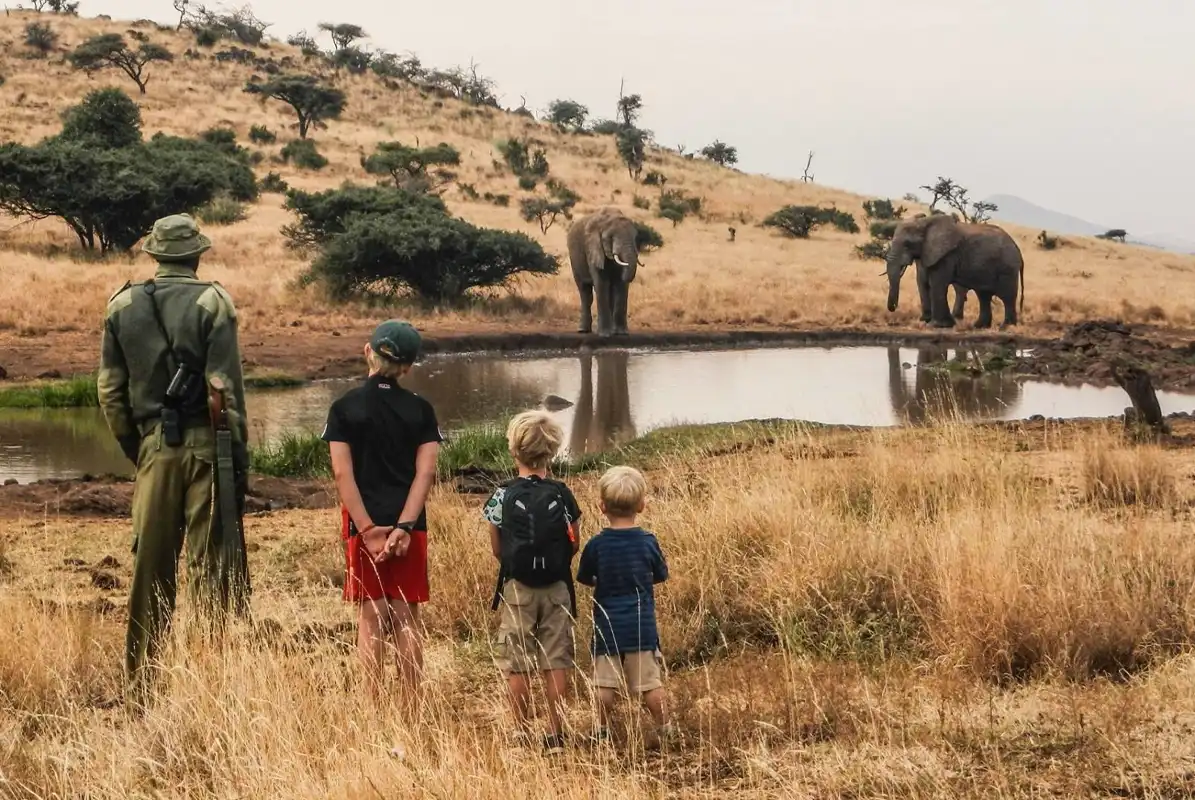
7 Days Tanzania Family Safari with Cultural Experience
7 Days Tanzania Family Safari with Cultural Experience Embark on a 7 Days Family Safari with Cultural Experience, blending thrilling wildlife safaris, cultural experiences at
A migration safari offers an exclusive opportunity to see wildlife up close. Every year, over a million wildebeests embark on a challenging search for food and water, navigating through crocodile-filled waters along the way. It’s a real-life drama of nature, and you’ll have a front-row seat.
With an experienced guide by your side, you’ll spend your days tracking these magnificent animals across the plains. Come nightfall, you’ll relax in comfortable, well-equipped campsites.
This journey isn’t just about the wildebeests; it’s a full-on wildlife extravaganza. You’ll get to see all sorts of animals, from lions and cheetahs on the prowl to an amazing variety of birds overhead. It’s a chance to get up close with nature’s diversity, making your safari experience even richer and more exciting.
Immerse yourself in the world’s greatest show on the Earth. The Great Migration is a natural annual journey that is a mesmerizing odyssey undertaken by over 1.4 million wildebeest and countless zebras — a breathtaking testament to nature’s rhythms. Migrating from Tanzania ‘s Serengeti to Kenya ‘s Masai Mara, the Great Migration is truly a spectacle to experience.
While the iconic river crossings are its hallmark, migration safaris offer an intricate tapestry of experiences beyond imagination. Our migration safaris unveil the journey’s intricacies — from the dramatic pursuit of nourishing lands to the seasonal ebb and flow that directs this timeless spectacle.
Each stage of the migration rhythm — unfolding in a pattern throughout the months — presents unique encounters. Witness the lush expanse of calving season or the anticipation of perilous river crossings. Prepare to be captivated by the raw power and unyielding tenacity of life on the move and let our seasoned Travel Planners craft your migration safari package, transforming your African dreams into an unforgettable reality.

7 Days Tanzania Family Safari with Cultural Experience Embark on a 7 Days Family Safari with Cultural Experience, blending thrilling wildlife safaris, cultural experiences at
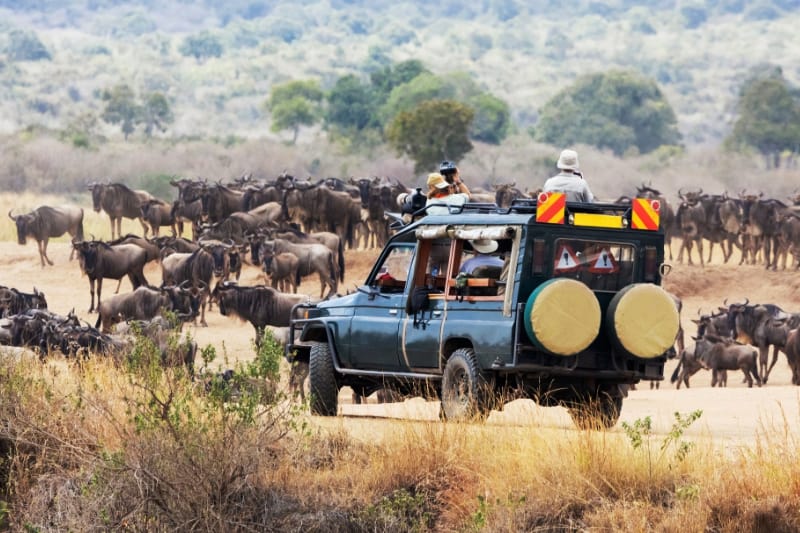
Step into the rhythm of the wild and witness one of nature’s most extraordinary spectacles the Great Migration. Each year, over two million wildebeest, zebras,
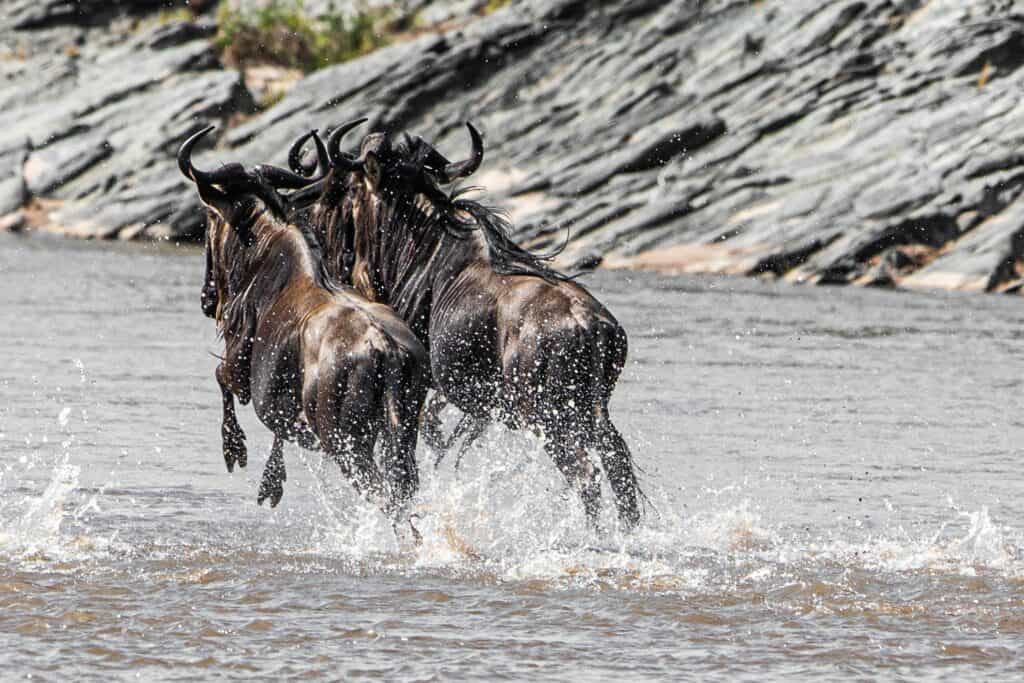
10 Days Serengeti Wildebeest Migration Adventure Our 10-day Serengeti Wildebeest Migration Tour in Tanzania offers a unique opportunity to witness one of the most spectacular
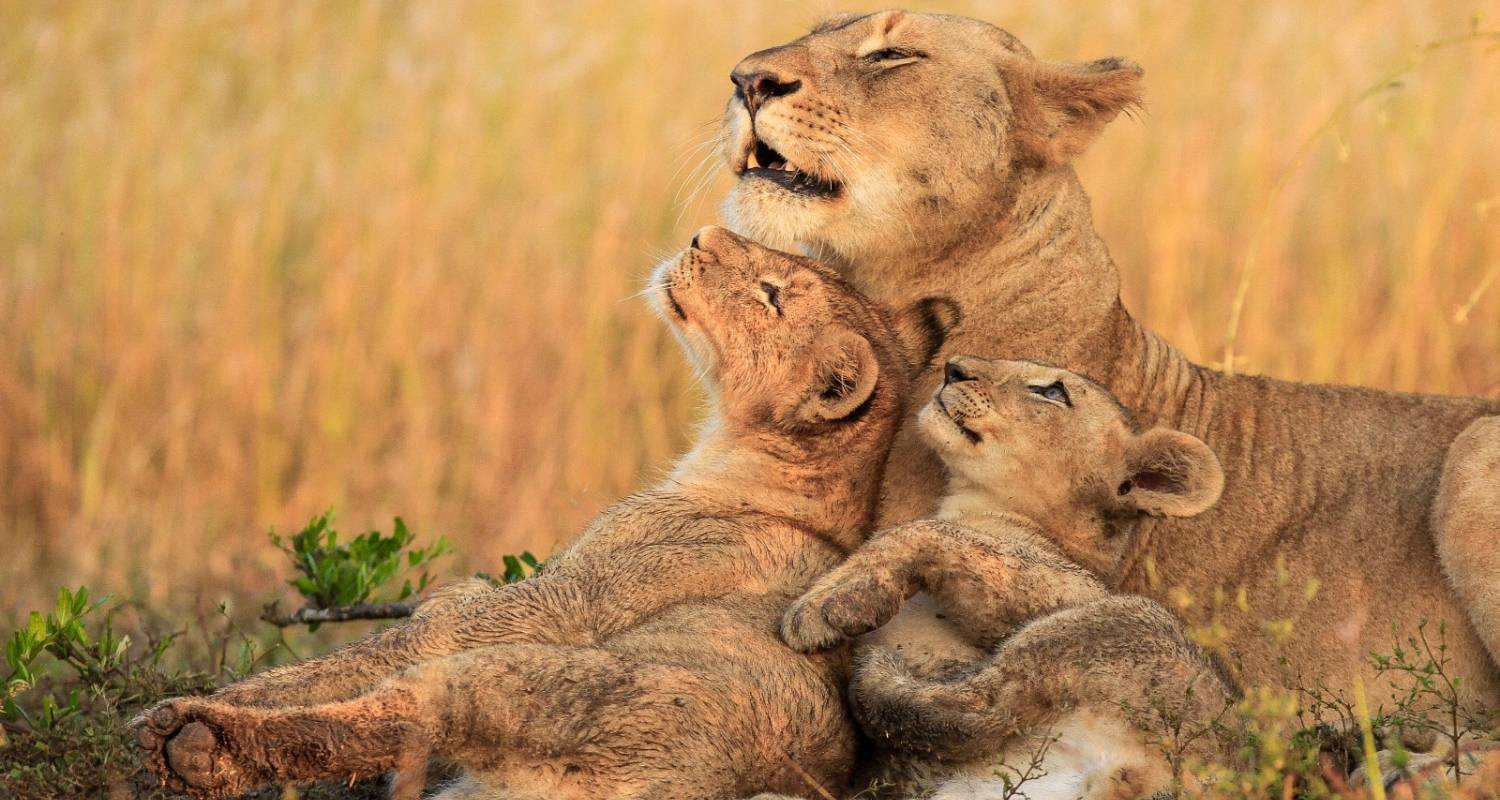
11 Days Magical Kenya Wildlife & Cultural Adventure Embark on our 11-day magical Kenya safari experience with our Nyumbu Beyond Journeys signature team. Visit Amboseli
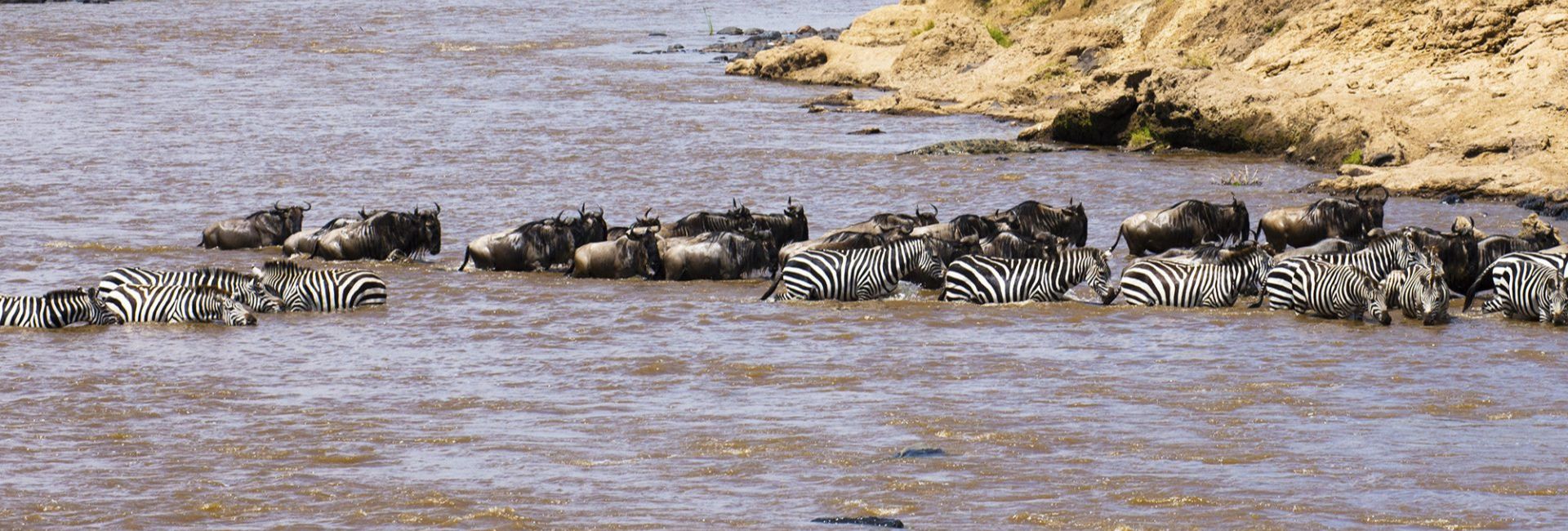
6 Days Great Migration Calving Season Embark on a remarkable Tanzanian safari, spanning southern Serengeti to northern Ngorongoro Crater. Witness the great migration, spend enchanting

4 Days Great Migration Calving Season safari Our 4-day calving safari heading out to Ndutu to explore the great wildebeest migration. On this journey we
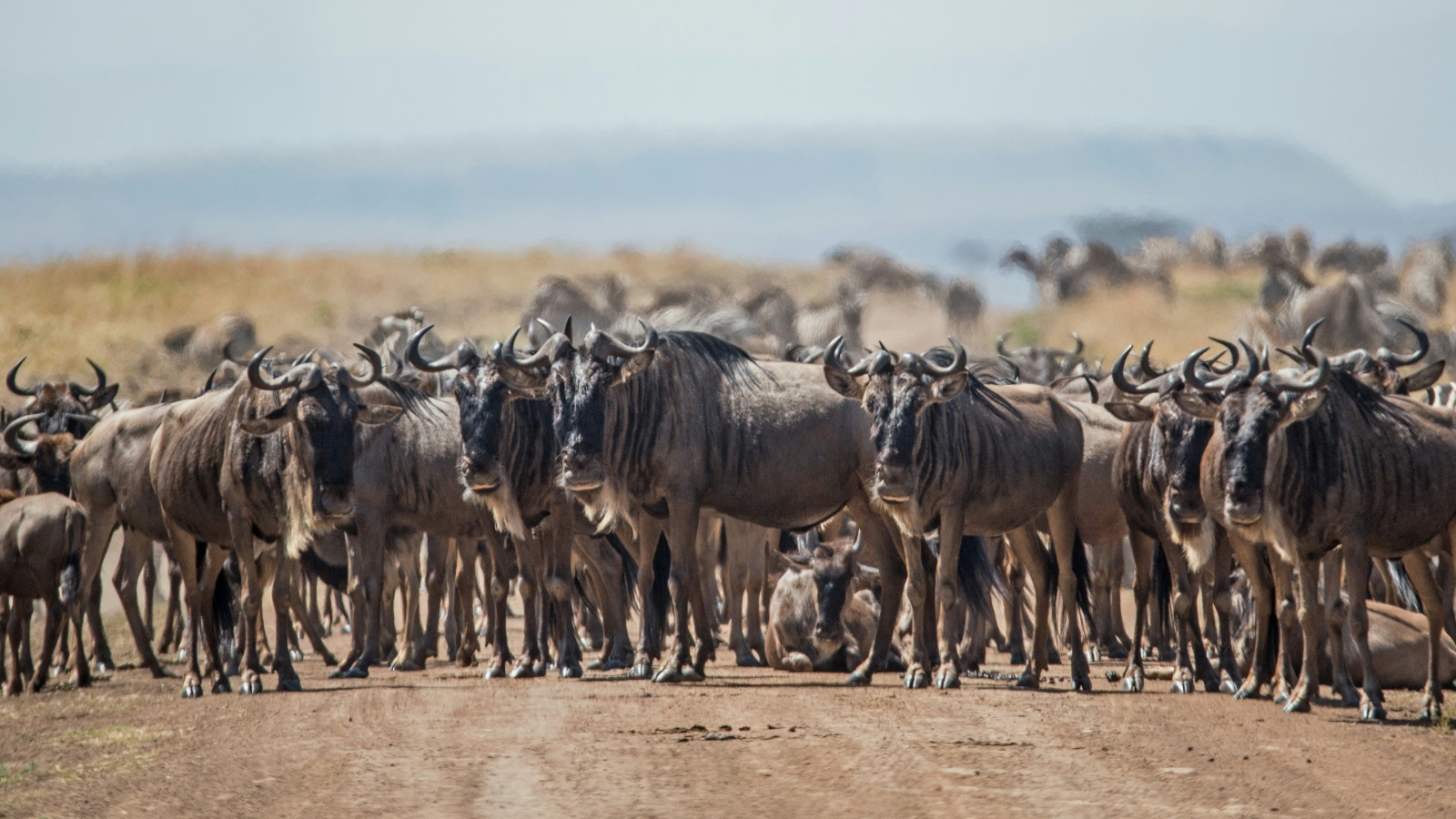
Our journey is designed for travelers seeking to see the largest herd movement of animals on the planet and go to the best national parks
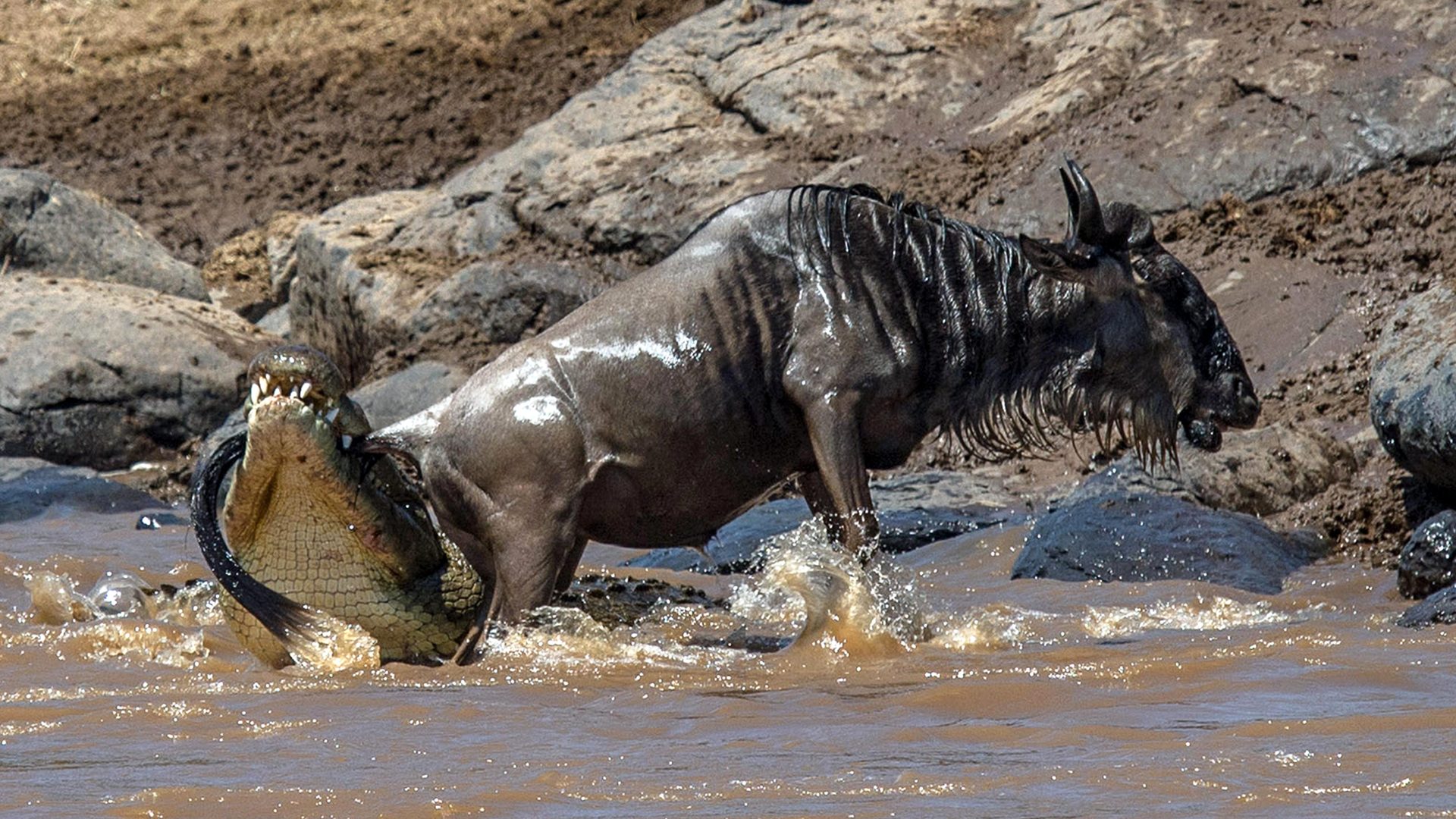
Our wildebeest migration calving season safari in the Serengeti. A name that radiates atmosphere, even before you arrive for your 7 days Grumeti River migration.
The Great Wildebeest Migration is an annual spectacle in East Africa. This occurs mainly between Tanzania’s Serengeti National Park and Kenya’s Masai Mara National Reserve.
It’s a huge event. Over two million animals, like wildebeest and zebras, travel far and wide.
They’re always looking for fresher, greener places to eat. The animals move in a big circle throughout the year.
This is because they follow the rain to find the best food. People love to watch this, and many come from far away to see all the animals moving in a grand display of nature.
The Great Wildebeest Migration happens all year round. But when you see it depends on where you want to go. Usually, the best time is between July and September. The animals cross the Grumeti and Mara Rivers in Tanzania and Kenya during these months.
It’s a huge event. Over two million animals, like wildebeest and zebra, you can see the herds cross rivers, maybe see them meet predators, and watch as they fill the grasslands. But other times are good to visit too. In February and March, you can see baby wildebeests being born. And from April to June, you can watch many birds in the Serengeti.
A safari trip to see the Great Wildebeest Migration is like seeing a giant move of millions of wildebeest, zebras, and antelope across the large grasslands in East Africa. You can watch the herds cross rivers in Kenya and Tanzania, taking on dangerous crocodile-filled waters to find better places to eat. You’ll also see animals like lions, hyenas, and cheetahs following the herds, leading to exciting moments between the hunters and the hunted.
The primary parks and reserves that offer the opportunity to experience the Great Wildebeest Migration are Tanzania’s vast Serengeti National Park and Kenya’s Masai Mara National Reserve. The Mara River connects the two areas—one of the migration’s main river crossings—and encompasses a combined area providing a vast, rich habitat for migratory animals and wildlife enthusiasts. Other nearby parks and reserves, such as Kenya’s Amboseli National Park and Tanzania’s Ngorongoro Conservation Area, can significantly add to your safari, further enhancing your wildlife experience.
Although the Great Wildebeest Migration is a continuous phenomenon, predicting its progress’s exact location and timing can be difficult due to different aspects, such as rainfall patterns. To optimize your chances of witnessing the migration, working with a knowledgeable local safari operator is of paramount importance.
They possess invaluable insight into the animals’ movement, the regions’ unique weather circumstances, and the best spots for wildlife watching. Booking your safari during the peak season can also enhance your chances of seeing dramatic river crossings and the herds in full splendour.
The Great Wildebeest Migration safari can also be a thrilling, educational, and unforgettable experience for children. Family-friendly lodges and accommodations throughout the parks and reserves cater to young travellers. Many lodges offer special family programs, activities, and modified game drives to keep young adventurers engaged and entertained.
However, be prepared for long game drives and the possibility of witnessing intense wildlife events, such as predator-prey encounters. It’s essential to assess your children’s interests and abilities prior to embarking on such a safari.
Various accommodation options cater to multiple tastes and budgets during a Great Wildebeest Migration safari. From luxury lodges and tented camps offering lavish facilities and personalized services to budget-friendly campsites and more basic lodgings, there is something for everyone. Some accommodations even reposition themselves seasonally to remain close to the migration, providing their guests with optimal wildlife viewing opportunities from the comfort of their lodges or camps.
Embarking on a Great Wildebeest Migration safari in East Africa is generally safe, provided you adhere to the guidelines set by your safari operator and the park authorities. The trained guides and knowledgeable local tour operators prioritize their guests’ safety and ensure best practices throughout the safari.
It’s important to remember that you’ll be near wild animals; thus, following instructions and avoiding unnecessary risks is crucial. Always ensure you have updated travel documents, relevant vaccinations, and recommended medications to protect yourself from potential health risks associated with travel.
To truly immerse yourself in the Great Wildebeest Migration experience, consider planning a safari that lasts between 7 and 10 days. This duration allows ample time to explore different regions of the Serengeti National Park or the Masai Mara National Reserve, ensuring you can witness various aspects of the migration, such as river crossings or predator encounters. A longer safari combines the migration experience with other activities, such as visits to local villages or parks.
Going on a safari to see the Great Wildebeest Migration is a beautiful opportunity for photographers and people who love wildlife. It’s a special event that’s truly impressive. The landscapes are beautiful and vast, with massive groups of animals. This makes the African wilderness look amazing. Photographers get a great chance here to take striking pictures.
Wildlife enthusiasts can revel in species diversity and delight in rare encounters with elusive animals in the region. The migration is a once-in-a-lifetime spectacle that offers incredible memories and unforgettable experiences for anyone passionate about the natural world.
Your questions about Kenya and Tanzania’s safari spectacle answered
The Great Migration is the annual mass movement of over a million animals – mostly wildebeests, but also zebra, impala, and gazelles – on a 2900-kilometre circuit around the plains of Kenya and Tanzania, thundering from the Serengeti up to the Maasai Mara and back down again following the rains and fresh grasses.
This thriving ecosystem hosts more large mammals than anywhere else on earth and the safari experience is spectacular, visceral and raw, the air dusty from thundering hooves and the smell pungent, with apex predators waiting for their time of plenty.
What makes it the ‘Greatest Show on Earth’?
It isn’t your average gathering of grazers. Eastern Africa’s Great Migration often involves about 1.4 million wildebeest and 200,000 zebra and gazelles. Witnessing this volume of animals grazing in one place is difficult to comprehend, let alone seeing them on the run, charging into the rushing, crocodile-infested Mara River, or startled by stalking lions on the short grass Ndutu plains. There’s nothing else quite like it for such an immense natural spectacle.
When is the Great Migration?
Although dependent on rainfall, the timing of the migration’s movements is broadly predictable, and the herds migrate year-round, so there’s always something to experience somewhere.
In January, the wildebeest are spread out across southern Serengeti, where females birth calves, making the most of the safety in numbers and volcanic, nutrient-rich grasses on the lower slopes of the Ngorongoro Crater. Around 8000 new calves arrive each day. Predators like big cats enjoy the spoils of so many vulnerable young, which can run within a few days of being born but often not fast enough. In February and March, these ‘super grasses’ become exhausted, and so the herd and their young begin to move towards the central Serengeti.
The annual ‘long rains’ draw the animals to the Western Corridor between April and June, a 100 kilometre stretch of land between the central Serengeti and Lake Victoria. Around Moru Kopjes and west Seronera, snaking columns of thousands of wildebeest are joined by zebra and Thomson’s and Grant’s gazelles. May is mating season, and male wildebeest battle on the move for a harem. Here, gradually, the animals gather on the banks of the Grumeti River in preparation for the first river crossing of the year.
As the rain dissipates and drier days return in July, the herds stomp north, moving from Tanzania into Kenya’s Maasai Mara. This is perhaps the most dramatic moment in the year where herds are closely packed into a landscape fragmented by chaotic river-crossings and ravines. Between August and October, groups and sub-groups remain in the northern Serengeti and Mara until November and December when herds venture back south to start the circuit over again.
When is the best time to experience the Great Migration?
River crossings are the Great Migration’s most climactic cinematic moments, and the herds can be seen braving the Mara and its tributaries between July and August. For an off-the-beaten-track experience without the crowds the Mara can sometimes draw, Grumeti River crossings earlier in the year and can be seen in Singita’s private Grumeti Game Reserve. The event only takes place once so the timing is more down to luck than planning, but the herds can still be experienced en masse in the reserve itself.
How likely am I to see the Great Migration?
This is nature, so we’re never fully in control. Rainfall dictates the movement of the herds, so if the rains are early or late one year, this will have a knock-on effect on predicted timings. Climate change makes the rains less predictable than they once were. Even when herds reach the rivers, they could linger there for days before being compelled to cross. That’s why the Great Wildebeest Migration safari days are long and often cover a greater distance than other safaris.
When planning your safari, our travel researchers call on years of experience and contacts on the ground to pick the best spots that maximise your chances of being among the herds.
Where do you stay to experience the Great Migration?
The Serengeti and Mara host a wide range of accommodation options, from classic canvas camps to incredible exclusive use safari lodges. We’ll work with you to find somewhere that fits your taste, budget, is close to the action but away from the crowds and that has a positive impact.
Mobile camps are a brilliant way to make sightings more likely and frequent since they move every couple of months to follow the herds. These camps revolve around maximising wildlife viewings, ranging from classic under-canvas camps to some fabulously opulent mobile setups.
Migrational Camps do precisely that – they move throughout the Serengeti with the migration so that the drama is never far from where you wake. Earthy tones and organic materials wield each camp’s wild surroundings while providing a serene and luxurious respite from adventure-filled days.
Alongside wildebeest tracking, our great migration journeys offer guests the chance to meet and learn from ancient nomadic herders, the Datoga. Hot air balloon rides are a mesmerising way to witness the Great Migration spectacle from the air.
What else can I do on a Great Migration safari?
The Great Wildebeest Migration safari can be a pretty full-on experience, so we always recommend travellers tag on some downtime before or after, using your time here to extend your trip to explore more of East Africa.
In Tanzania, we recommend stepping off the well-worn ‘Northern Circuit’ to spend time in less visited but still incredible national parks to the south and heading to the Zanzibar Archipelago for some downtime on the beach.
In Kenya, there’s much to discover north of the Mara, such a range of adventure activities in Laikipia, the fascinating culture of Samburu and the infectiously laidback Indian Ocean coastline.
And for a real wildlife bucket lister trip, gorilla trekking in neighbouring Uganda or Rwanda pairs wonderfully with a safari.
Does the Great Migration make it unique for a great family safari?
It’s best to tackle a Great Wildebeest Migration with older children – days are long, and there can be many sitting around waiting for the action, or taking in the same view, often into the midday heat. Younger kids may get bored and restless.
That said, different stages of the Great Migration circuit offer unique challenges and benefits when travelling with kids. January to March is the ‘green season’ in the Serengeti and Mara – prices are lower, the landscape is lusher, birds are plentiful, and hundreds of calves are born. This can be an excellent opportunity for larger families to get a slice of the action at a reduced cost. During river crossings, in June and September, younger or sensitive children are unlikely to enjoy the sometimes graphically apparent circle of life.
